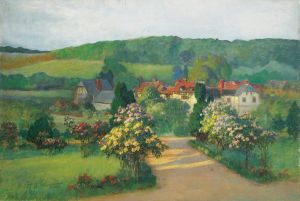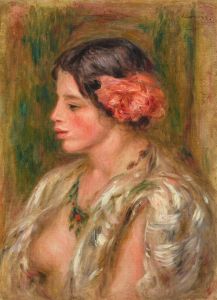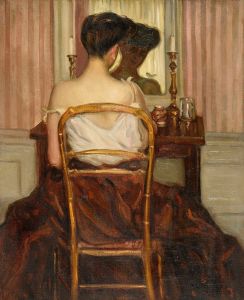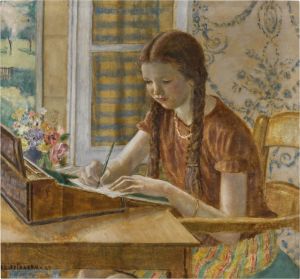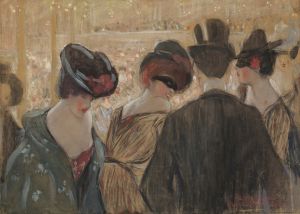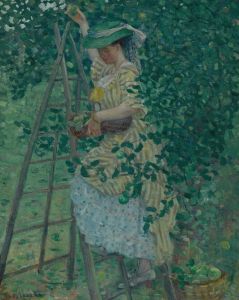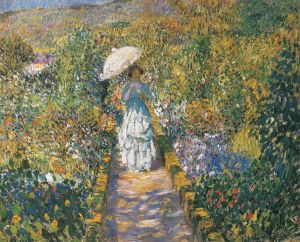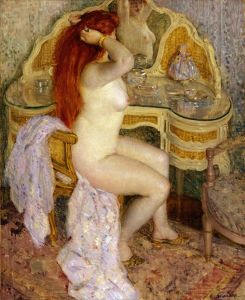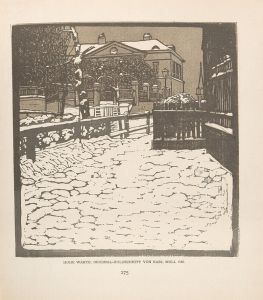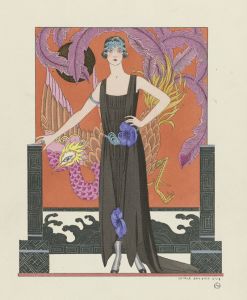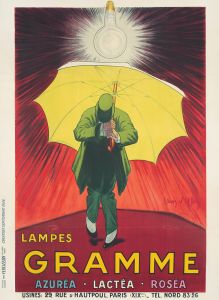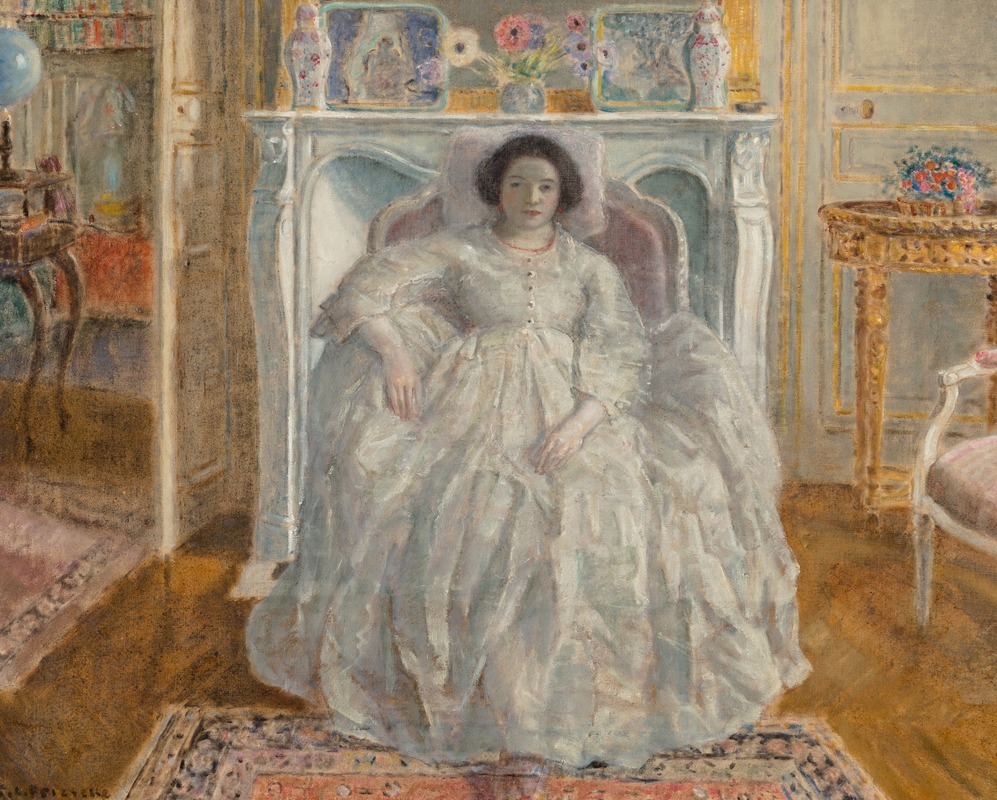
The White Gown
A hand-painted replica of Frederick Carl Frieseke’s masterpiece The White Gown, meticulously crafted by professional artists to capture the true essence of the original. Each piece is created with museum-quality canvas and rare mineral pigments, carefully painted by experienced artists with delicate brushstrokes and rich, layered colors to perfectly recreate the texture of the original artwork. Unlike machine-printed reproductions, this hand-painted version brings the painting to life, infused with the artist’s emotions and skill in every stroke. Whether for personal collection or home decoration, it instantly elevates the artistic atmosphere of any space.
"The White Gown" is a painting by the American Impressionist artist Frederick Carl Frieseke, created around 1913. Frieseke, born on April 7, 1874, in Owosso, Michigan, was a prominent figure in the American Impressionist movement and spent a significant portion of his career in France. He is best known for his depictions of women in intimate, domestic settings, often bathed in natural light.
"The White Gown" exemplifies Frieseke's mastery of light and color, hallmarks of the Impressionist style. The painting features a woman dressed in a flowing white gown, seated in a serene, sunlit interior. The subject is captured in a moment of quiet reflection, her gaze directed away from the viewer, contributing to the painting's contemplative mood. The white gown, with its delicate folds and subtle variations in tone, showcases Frieseke's skill in rendering fabric and texture.
Frieseke's use of light in "The White Gown" is particularly noteworthy. The interplay of light and shadow creates a luminous effect, enhancing the sense of tranquility and intimacy. The soft, diffused light filters through the room, casting gentle shadows and highlighting the delicate features of the subject and the intricate details of her gown. This treatment of light is characteristic of Frieseke's work, reflecting his interest in capturing the ephemeral qualities of natural light.
The setting of "The White Gown" is typical of Frieseke's interiors, which often feature richly decorated rooms with patterned wallpapers, upholstered furniture, and an array of decorative objects. These elements contribute to the overall sense of comfort and refinement, providing a fitting backdrop for the elegantly dressed subject. The harmonious color palette, dominated by soft whites, creams, and pastels, further enhances the painting's serene atmosphere.
Frederick Carl Frieseke was influenced by both French and American Impressionists, and his work often reflects a synthesis of these influences. He studied at the Art Institute of Chicago and the Art Students League of New York before moving to Paris in 1898. In France, he continued his studies at the Académie Julian and was exposed to the works of leading Impressionist painters such as Claude Monet and Pierre-Auguste Renoir. Frieseke eventually settled in the artists' colony of Giverny, where he became a close associate of Monet.
Throughout his career, Frieseke received numerous accolades and exhibited widely in both Europe and the United States. His work was well-received by critics and collectors alike, and he played a significant role in popularizing Impressionism in America. "The White Gown" remains one of his most celebrated works, exemplifying his ability to capture the beauty and tranquility of everyday moments.
Today, "The White Gown" is held in the collection of the Detroit Institute of Arts, where it continues to be admired for its exquisite rendering of light, color, and texture. The painting stands as a testament to Frieseke's talent and his contribution to the Impressionist movement.





